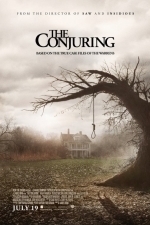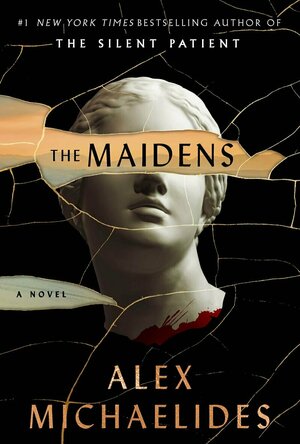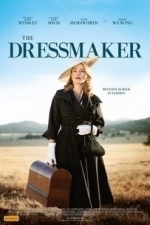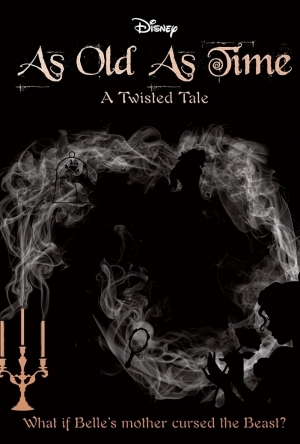
Endless Fables: The Minotaur's Curse (Full)
Games and Stickers
App
"There are some beautiful moments" - Allaboutcasualgame.com "A very high quality game" -...
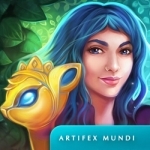
Tiny Tales: Heart of the Forest
Games and Stickers
App
FANTASTIC HIDDEN OBJECT PUZZLE ADVENTURE GAME FROM THE CREATORS OF ENIGMATIS AND GRIM LEGENDS! There...

Eventide 3: Legacy of Legends
Games and Stickers
App
SPECIAL INTRODUCTORY PRICE - 40% OFF FOR LIMITED TIME ONLY! FANTASTIC HIDDEN OBJECT PUZZLE...

Tibetan Quest: Beyond the World's End
Games and Stickers
App
"Beautiful landscapes of the Orient" - AllAboutCasualGame.com "A thrilling hidden object game"...
postapocalypticplayground (27 KP) rated The Last Namsara in Books
Jan 9, 2018
The last Namsara is very much a book of revelations for Asha. The dragon attack when she was a child left her without a mother and also horrible scarred from the burns she suffered. Having to not only live with the fact that she is hated she also has to deal with the stares associated with her disfigurement, the armour she wears is both necessary for her hunt and for her emotional wellbeing. When her secret is out following an accident during a hunt, she is tended to by Torwin, her betrothed’s slave, who seemingly is willing to keep her secret, but at what cost to both of them?
Through a series of cruel acts she finds herself visited by the first Namsara who starts her on a path that will not only unravel the truth about what happened the day of the dragon attack, but also a much deeper and long running deception. Asha must therefore right the wrongs.
I very much liked Asha as a character, I found that she was written with both strength and vulnerability, she has always been the Iskari and that has given her an opportunity to hide behind a persona. She is however still a teenager and she has the same hopes and fears as everyone, but her hardened act is thankfully easy to scratch beyond the surface of. The book was an easy flowing read and I particularly liked how the Old Stories were interwoven into the pages, completing parts of the story and acting almost like a running prologue. It was a great way of explaining a complicated back story without being an info dump on the reader. I also found that there was a great deal of realism about the aftermaths of events, the fact that laws can’t be changed to suit the sovereign and that one persons change for the better will always be anothers change for the worse. It didn’t shy away from the ugly side of things and that always gets good marks from me.
That being said, I found the Last Namsara lacked a certain spark. I enjoyed reading it very much don’t get me wrong, but it didn’t have my pulse racing and I found it easy to put down of an evening. I would still recommend this to anyone who is a fan of dragons and kick ass female protagonists as it really does have a lot to like.
Mark Jaye (65 KP) rated The Conjuring (2013) in Movies
May 13, 2019
As an avid fan of horror I look for a few little things which if aren't apparent within the first minute decide on whether I'm going to bother with the rest of the film. Usually the company releasing the movie is a good starting point, reputable/recognised director or producer, recognisable actor/s, good production values - that sort of thing. I've seen some hum-dingers over the years - those films where Johnny Nobody has gathered several of his buddies together with a cheap camcorder or two and filmed some alleged zombie epic in the woods at the back of their school.
**The Conjuring is not one of those**
I like to think I have a strong disposition when it comes to scares - usually it takes a lot to make me squint. Examples that come to mind are 'Sinister', 'The Grudge', the end of 'The Ring' (you know, the scary dark haired girl climbing out of the TV!). The Conjuring is one of those - I watched this in the middle of the morning and found it pretty scary in places.
James Wan certainly knows how to make a movie of this type and is great at evoking atmosphere and notching up the scares as the film develops. In a nutshell, this is the alleged real life story of the Perron family who in 1971 moved into a new farmhouse. It isn't long before the usual shenanigans begin - pictures pulled off walls, doors knocking in the dead of night, the children befriending mysterious 'imaginary' kids (who we all know watching are going to show up at some point). The film sticks to the tried and tested story - gradual possession of one of the adults (Lily Taylor), gradually increasing appearances by ghostly figures, calling in the ghostbusters, gathering the proof, then the exorcism. It may be join the dots territory but it works.
Patrick Wilson shines and seems to be making his mark in films of this nature (Insidious and Insidious Chapter 2) - he portrays real life paranormal investigator Ed Warren who with his wife Lorraine (played just as well by Vera Farmiga) become immersed in the life of the Perron's making themselves targets of the supernatural force at work in the process.
The demonic spirit at work is that of a witch who was married to the guy who built the house back in the 1800's who cursed the land before committing suicide after murdering their child whilst a few days old. There is one particularly pant browning scene where the witch makes her first appearance atop a bedroom wardrobe....and I'll leave it there!
Quality. Best horror I've seen since Sinister.
Kristy H (1252 KP) rated The Maidens in Books
Jun 24, 2021
"Death was no stranger to Mariana; it had been her traveling companion since she was a child--keeping close behind her, hovering just over her shoulder. She sometimes felt she had been cursed, as if by some malevolent goddess in a Greek myth, to lose everyone she ever loved."
Unpopular opinion time... this book did not work for me. I did not find it engaging nor interesting. I had to force myself to keep reading, as I did not care for any of the characters, including Mariana and Zoe. Mariana is fixated on Edward Fosca from the beginning and seems convinced she should insert herself in a rather serious murder investigation despite not seeming one bit qualified. I'm not sure how her group therapist qualifications lend her any credentials and she lies constantly, much to the annoyance (justified) and detriment of the police. There are basically no sympathetic characters, and there seems to be no reason to care about the murdered women, as we're given no background on them. Some characters (e.g., Julian) seem inserted for no reason whatsoever.
There is a lot of Greek mythology tucked into the story and perhaps I was just over it, as I've read several books revolving around Greek myths lately. It was a lot, though, and sometimes did not seem relevant to our story.
This thriller is certainly atmospheric, with Cambridge playing a strong role in the setting. You definitely feel a part of the academic setting, and I learned a lot about the university while reading. It's dark and somewhat foreboding, but since I was not fully invested in the story, I could only feel so tense. There are some twists, but the big twist came too late and seemed too preposterous to be truly exciting. The author throws in so many red herrings that you find yourself almost rolling your eyes.
Still, this is a very popular thriller for many readers, so chances are it may work for you. For me, it just didn't hold my interest or seem all that, well, thrilling. 2 stars.
Darren (1599 KP) rated The Dressmaker (2016) in Movies
Oct 14, 2019
Performances – Kate Winslet is great in this leading role, bring us a character filled with guilt who is just as happy to show a positive confident side to the people in the town. Judy Davis is a scene stealer in this film, being able to get the laughs required to make her the most memorable part of nearly ever scene she is in. Liam Hemsworth is at the best he has ever been, which is great to see him breaking away from the roles that aren’t working for him. Hugo Weaving gets to have a lot of fun in his role too.
Story – The story follows a woman who returns home to get revenge on the people that forced her to leave, only to learn that town has just as many secrets within the walls, that revenge is just about letting them out. We get to see how a town can turn enough heads to make everything seem like nothing is wrong, only for a curse to be waiting to be lifted if it isn’t inside somebody’s mind. We do get a lot of characters being introduced which can make things difficult to keep up with because we get plenty of little factors that do lead up to the personal conflict between the characters. this is a lot more fun of a story than I was expecting even though it is sprinkled with very dark moments.
Comedy – The comedy in the film does come the quirky nature of the events as they unfold, we have plenty of fashion related comical moments as well as small town gossip, which will get laugh along the way.
Settings – The film is set in a small rural Australian town, where everybody does know everybody else, we are filled with gossip and instant reactions to anything that goes on in the town too.
Scene of the Movie – Leaving town.
That Moment That Annoyed Me – Slightly too many characters.
Final Thoughts –This is a quirky dark comedy that is sprinkled by the elements of revenge, which does keep us wondering just what is the endgame of her decision making process.
Overall: Dark quirky comedy treat.
Kyera (8 KP) rated Princess of Thorns in Books
Feb 1, 2018
The author makes use of these characters and plots in her novel. She chooses to include the ill-fated mother, brother and sister, as well as the villainous step-mother. Although that familial tie is not explicitly stated, the King was the children's father and he married the ogre. Thus, she would be their step-mother. And you thought you had a dysfunctional family?
In true fairytale fashion, there are ogres, witches, fairies, and ruffians. Not all are portrayed as you would expect. The ogres have evolved, or perhaps devolved depending upon who you ask. In the early years, the ogres were monstrous creatures that devoured souls whole. They did not control themselves, but feasted on the entire soul leaving nothing behind. As time went on, they were forced to change and limit how much they took. After a time, the ogres began to become smaller and take on much more human-like appearances. Their food source never changed and they prided themselves upon each soul they took, marking their bare skulls.
The Fae seem human, although they possess extra-human traits and magic. One may not think of fairies and immediately imagine a human-like creature with great dexterity, skill in battle, and a lack of guilt -but the Fair Folk are shown this way in the novel. A fairy can bestow a gift upon a human child, like beauty, courage, eloquence, obedience, or strength. But each blessing comes with a curse, as the magic always finds a way to turn the gift into a burden. There are untold consequences to the blessings that cannot be avoided. As such, the fairies stopped giving their gifts to human children.
As with most fairytales, there is an element of romance. The love story blossoms under unusual circumstances and not without its share of problems. The two characters get to know each other throughout the journey, but their are many secrets left untold. As they are discovered, the relationship is altered for good or bad. And in the end, a choice must be made.
Most importantly, the novel isn't entirely predictable (although the budding romance was expected). Generally, you expect good to triumph over evil in most modern retellings of the story - unlike their Grimm counterparts. The plot's climax was frankly a little anti-climactic, but enjoyable non-the-less.
I think the author showed an average amount of character development, although I usually think more would be incredibly beneficial. Certain aspects of the world were explained, but not vividly enough. The "show-don't-tell" method could have been employed here to create a richer, more immersive world. Overall, I was pleased with the author's lexicon, grammar, and spelling - which happens much less often than should reasonably be expected.
I would certainly read another novel by this author as I love stories based upon fairytales. If you read Alex Flinn, I would highly recommend this novel to you just keep in mind it is slightly darker. Readers of fantasy, romance, and the like will enjoy this book and should give it a chance. It seems to target the female demographic, but males should enjoy it as well.
Lottie disney bookworm (1056 KP) rated As Old As Time in Books
Aug 16, 2019
As Old As Time is the retelling of Beauty and the Beast and opens with the familiar story of the enchantress and the young, vain prince that we all know. You can probably still picture the stained-glass scene from the original 1991 movie and the dramatic ballroom scene in the 2017 remake.
Refusing to be eclipsed by these though, Braswell follows the well-known tale with: “It was a very good story. It often entertained the woman who lay in her black hole of a room, manacled to a hard, cold bed.”
Wait! What?
There, with one fell swoop, on the second page, Braswell brings an almost gothic darkness to the fairy tale. Of course, some would say it is already dark: very few people who are cursed to become a beast are particularly jolly about the situation! However, Braswell goes one step further by both revealing the story behind the enchantress and taking us on a journey to discover the ugly truth in the present.
Liz Braswell creates a kingdom where magic and non-magic people have lived together peacefully for years but where politics and a lack of cultural understanding is threatening to tear that apart as les charmantes find themselves persecuted by les naturels. (I can’t imagine where she draws her inspiration from(!))
It is in this kingdom that we meet a young dreamer called Maurice and the enchantress Rosalind, Belle’s mother (nicknamed Rose- so clever!). Maurice is very much a younger version of the character we grew up with: loveable and devoted to his inventions. Rosalind however is much more headstrong and impulsive: even changing her appearance on a whim. Her pride is fierce and we first meet her holding her own against a large man insulting ‘her kind’, calling her unnatural and a child of the devil. The bully soon learns the error of his ways when his nose is replaced by a pig’s snout but a warning runs all the way through this tale: “magic always comes back on itself”.
Maurice and Rosalind’s life is happy and settled at first but they soon start to witness the persecution of les charmantes for themselves. Thus, when the King and Queen call on Rosalind to protect them against the advancing plague, she passionately fights for her people…only to be rejected and turned away. Maurice, always the voice of reason, convinces Rosalind to at least protect the children and servants and so it comes to pass that Rosalind later visits the young prince, on the eve of his coronation, carrying with her the simple gift of a rose.
Braswell’s character development is, as always, impressive. Belle is immediately relatable as the kooky bookworm we know and love: her story running parallel to the film until we, as readers, develop a relationship with her parents. It is then that we discover there is a slight edge to Belle. Although clearly tortured by the fact her mother cursed a 10-year-old boy, Braswell’s Belle is desperate to be adventurous and heroic like the characters in her books but soon realises an adventure is not all it is cracked up to be. Like her mother, Belle can be quite impulsive: grabbing the enchanted rose before the beast can stop her and destroying any chance of breaking the spell. However, she is also quick and cunning, tricking the wardrobe into revealing the curse’s timeline. Nevertheless, the bravery of our protagonist can never be doubted and Belle embarks on one hell of a journey to discover the truth about her family and herself.
Uniquely, within As Old As Time we slowly see side-line characters weave their way into the lives and stories of our characters. Levi and Alaric, for example, are old friends of Maurice and Rosalind and are seemingly insignificant to the story at first. However, Levi is also the godfather to Belle and the village bookseller (“If you like it that much, it’s yours!” – that guy). Alaric on the other hand has a significant link to the castle and both carry clues with them that assist Belle on her quest.
Any Beauty and the Beast tale would not be complete without LeFou and Gaston – that infamous double act- but even Gaston is ever so slightly darker than his animated counterpart. Frederic: another friend from the past and, quite frankly, odd from the start also plays a pivotal role in the story but I won’t spoil the surprise for you!
As Old As Time is true to its name: weaving two stories into its plot at different points in time: the story that we all know and the story of how that came to be. It is an ominous tale with curses, murder, creepy ivy statues and a frankly terrifying tour of the lunatic asylum.
It is not all doom and gloom however; Liz Braswell takes a very tongue-in-cheek attitude towards the infamous scenes within Beauty and the Beast: invoking a dry sense of humour into the story. From a chapter named “Be Our … Oh You Know the Rest” to a direct reference to Stockholm Syndrome: Braswell makes sure that we do not expect her novel to be a copycat, heartfelt tale with a happy ending. Belle even remarks to the Beast that hoping she would fall in love with him within a month or so was wildly unrealistic.
This is very much a novel for the cynical Disney lovers amongst us and highly deserving of its title of a twisted tale!

